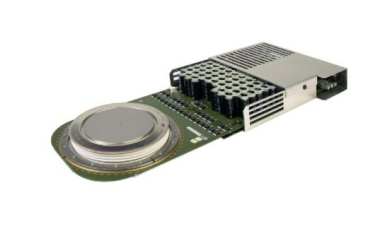
The Emitter Turn-Off Thyristor (ETO) is an important semiconductor device used in high-voltage and high-power applications within the electronics industry. It is widely used in power electronics, particularly in scenarios that require fast switching and precise control. Compared to traditional Silicon-Controlled Rectifiers (SCR), ETO offers more efficient switching performance, making it a crucial component in industrial power systems and motor control. This article will delve into the definition, working principle, characteristics, advantages, and applications of the ETO.
Catalog
I. What is an ETO?
The Emitter Turn-Off Thyristor (ETO) is a semiconductor switching device with a four-layer PNPN structure. It combines the benefits of both the Thyristor and the Gate Turn-Off Thyristor (GTO), enabling rapid and precise current cutoff without relying on external current. The working principle and control mechanism of the ETO give it unique advantages in high-voltage power conversion and motor speed control applications.
II. Working Principle
The ETO operates based on its unique four-layer PNPN structure. In the conducting state, the ETO allows current to flow. By controlling the gate signal, the ETO can quickly transition to the off state, blocking the current. Unlike traditional Gate Turn-Off Thyristors (GTO), the ETO does not require external current to maintain the off state; instead, it controls the emitter to turn off the device, enabling faster turn-off and shorter response times.
III. Features and Advantages
· Fast Turn-Off Capability: The ETO can turn off quickly without requiring external current, enhancing the system's response speed.
· High Switching Frequency: Due to its excellent turn-off characteristics, the ETO is suitable for high-frequency switching applications, meeting the demands of modern power electronic devices.
· High Current Handling Capacity: The ETO is capable of handling large currents, making it ideal for high-power applications such as power systems and industrial drives.
· Ease of Series and Parallel Use: The design of the ETO allows for good uniformity and reliability when used in series or parallel configurations, making it convenient for various power level applications.
IV. Applications
The ETO is widely used in the following fields:
· ETOs are used in high-voltage direct current (HVDC) transmission systems and dynamic reactive power compensation in grids, improving the stability and efficiency of power systems.
· In motor control and variable frequency drive (VFD) systems, the ETO is used for precise control of motor power supply, enabling efficient motor drive operations.
· In solar and wind power conversion systems, the ETO helps optimize the transmission and control of current, improving energy conversion efficiency.
· ETOs are commonly found in power system protection devices, such as overload protection and current cutoff operations, ensuring the safe operation of power equipment.
V. Conclusion
As an efficient power control component, the Emitter Turn-Off Thyristor (ETO) offers rapid turn-off, high voltage tolerance, high current handling capacity, and high-frequency switching capabilities. These features make it widely applicable in power systems, industrial drives, and renewable energy fields. With the continuous advancement of power electronics technology, the application prospects for ETOs are expanding, establishing them as a key element in efficient power control.




